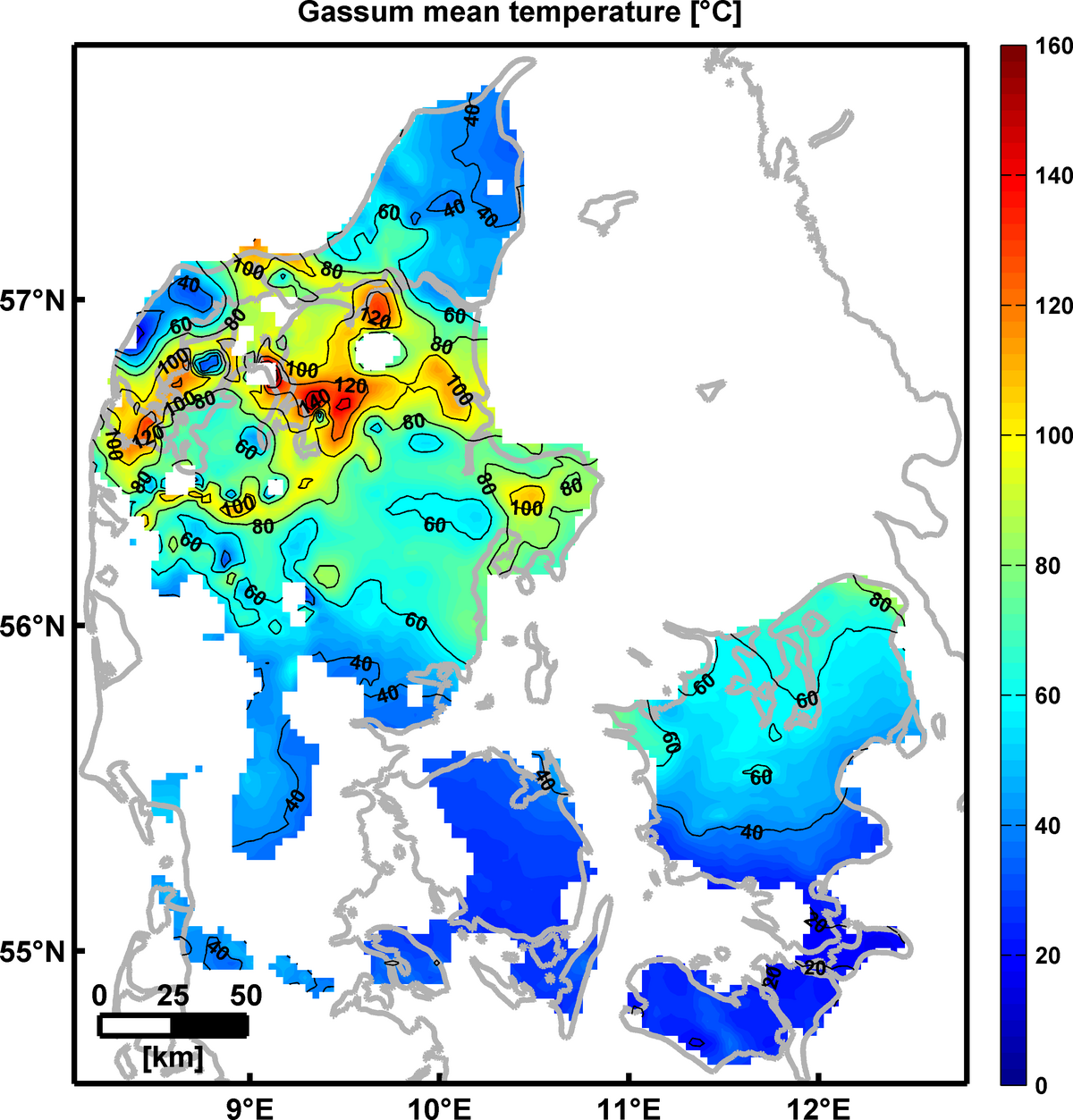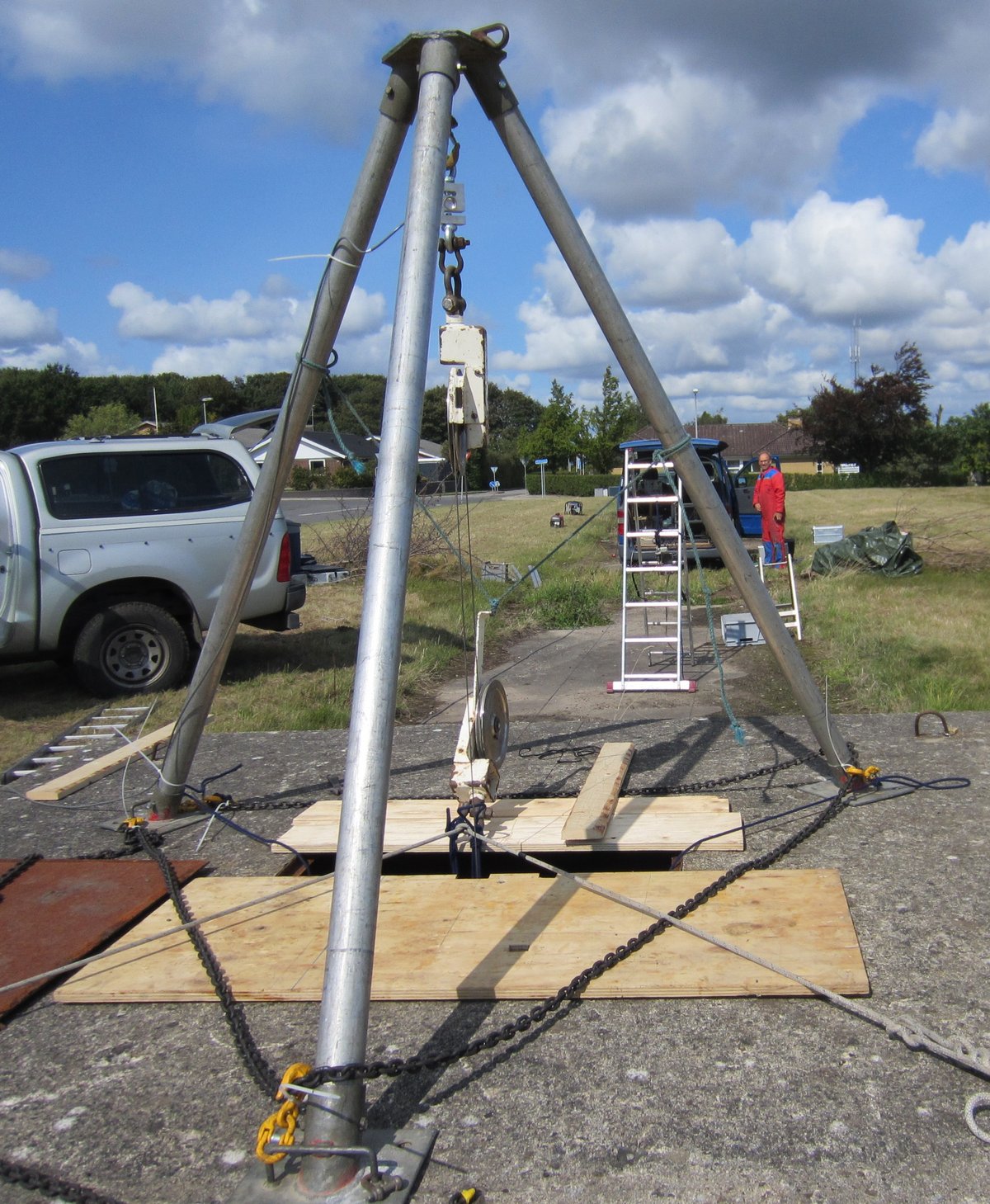The Department of Geoscience has a long tradition for geothermal research. Currently, we focus our research on the following main areas:
Danish sedimentary basins contain large amounts of low enthalpy geothermal resources. Our geothermal research is devoted to developing and applying methods to increase our knowledge on these energy resources to provide information of importance for large-scale utilization.
A new 3D geothermal model is developed for onshore Denmark with information on subsurface temperature and heat-flow structure. Numerical inverse modelling ensures consistency between measured borehole temperatures and modelled values. Temperature information may be extracted for any selected constant depth, selected formations such as main geothermal reservoirs and for any specific site of interest.
In project GEOTHERM (by Innovation Fund Denmark), we study thermal lifetime and sustainable heat extraction by numerical modelling of geothermal reservoirs with combined production and reinjection. Geostatistical concepts are introduced for reservoir characterisation. Seismic data are interpreted to obtain structural information of geothermal reservoirs, and quantitative information on reservoir properties is obtained by seismic inversion and rock physics analysis (cooperation with Qeye and GEUS).
The research group has access to in house seismic equipment for shallow and intermediate deep data acquisition as well as advanced seismic processing and interpretation facilities (SEISLAB).


The group has state-of-the-art laboratory and field equipment for basic heat-flow and subsurface thermal studies. Apparatus include transient divided bar and needle probe equipment for laboratory rock thermal measurements and equipment for high precision borehole temperature logging to shallow as well as great depth (more than 5.000 m).
Over the years, field work for heat flow studies were carried out in Denmark, Greenland, the Faroe Islands, Norway and Sweden.
Crustal and lithospheric thermal structure were modelled for the Danish and adjacent areas, the Baltic Shield and North German Basin.
Priority of renewable energy in regional energy networks ask for energy storage facilities. As the background for the evaluation of the potential for shallow heat storage as well as for the extraction of shallow geothermal energy by heat pumps, all available temperature and thermal conductivity data onshore Denmark are compiled and analysed. Maps of temperature variability for the depth range of 50 – 300 m are being constructed. (EUDP projects in cooperation with GEUS).
We model recovery factors for intermediate and deep storage of heat in sedimentary reservoirs. Furthermore, we contribute to EUDP project on high temperature heat storage in rocks for the generation of electricity. (Project with several partners, including).